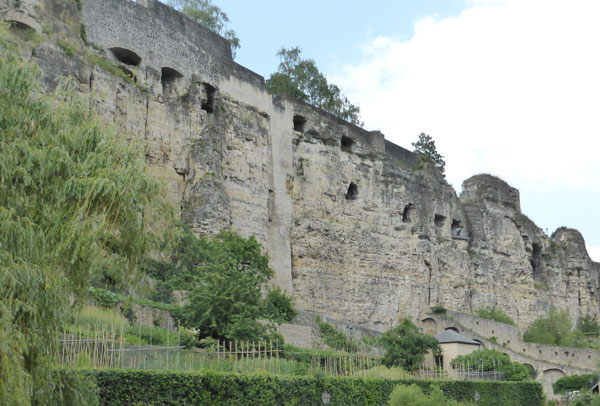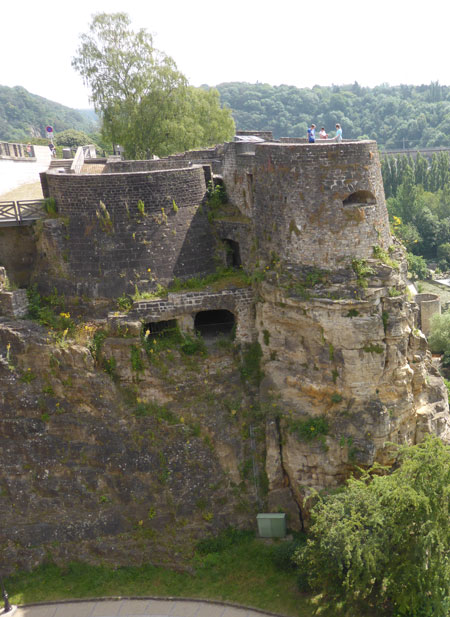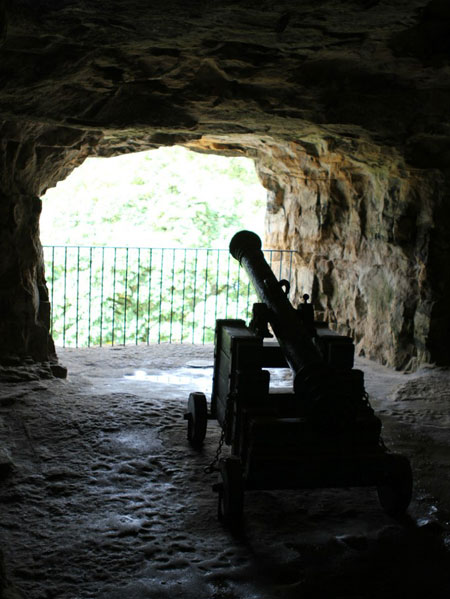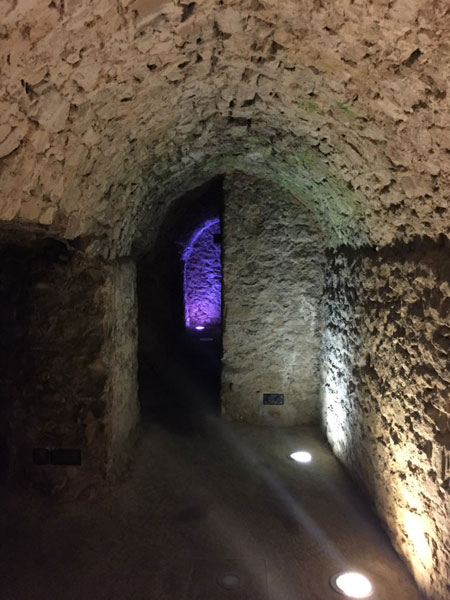A casemate, sometimes erroneously rendered casement, is a fortified gun emplacement or armored structure from which guns are fired. Originally, the term referred to a vaulted chamber in a fortress. In armoured fighting vehicles that do not have a turret for the main gun, the structure that accommodates the gun is termed the casemate.
Contents
The word comes from the Italian casamatta, the etymology of which is uncertain, though it could derive from casa (in the sense of "hut"), and matta (Latin matta), "done with reeds and wickers", thus a low-roof hut without windows or other openings set in marshy place. It could also derive from casa matta with matta in the sense of "false".
A casemate was originally a vaulted chamber usually constructed underneath the rampart. It was intended to be impenetrable and could be used for sheltering troops or stores. With the addition of an embrasure through the scarp face of the rampart, it could be used as a protected gun position. In the early 19th century, French military engineer Baron Haxo designed a free-standing casemate that could be built on the top of the rampart. Casemates built in concrete were used in the Second World War to protect coastal artillery from air attack.













